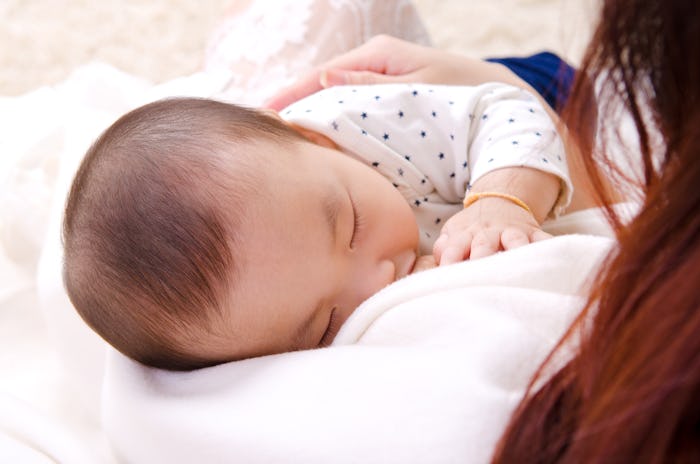Life

5 Signs of Involutional Change
Many women are concerned that, as they age or become a mother, their breasts will start to change in an unflattering way. And, to be straight with you readers, they will. As your body adapts to, there are going to be differences and signs of involutional change (or, returning to their original form). But that doesn't have to be a negative thing.
According to a Baby Center article written by Lactation Consultant Jan Berger, age, weight fluctuation, pregnancy, gravity, and even breastfeeding affect the way breasts appear over time. And even if you decide not to breastfeed as a new mom, it's still inevitable that changes will happen to your breasts with time and age. Even for those women who haven't given birth or choose not to breastfeed, John Hopkins Medicine reported that, over time, estrogen reduction occurs in the body (including breast tissue), and there is a reduction in the glandular tissue of the breasts. This causes breast tissue to shrink and lose shape, which means your breasts aren't going to be as full or "lively." This occurrence, along with the changes that can accompany breastfeeding moms' breasts, can bring the following signs of involutional change along with them.
1Sagging
This is probably the number one fear of involutional change among women and their breasts. To some extent, however, it's inevitable. John Hopkins Medicine shared that because breast tissue shrinks and loses shape, the ability for your breasts to maintain elasticity will also fade, which means some sagging and a little less fullness to your breasts.
2Swelling And Tenderness
During menstruation, women can begin to notice changes due to the progesterone hormone that takes over during a cycle and stimulates milk gland formation, according to University of Utah Health. This, in turn, it brings about hormones that can cause swelling and tenderness of the breasts during menstruation cycles throughout life. And according to many moms, this can also get worse after kids.
3Lumpiness
Another fun thing that occurs during menstruation for some women is a change in breast texture, according to University of Utah Health. This is the result of glands enlarging for a potential pregnancy and, if pregnancy does occur, the glands often do not return to normal size until you're done breastfeeding. In fact, your breasts often enlarge to prepare for breastfeeding. And even after you've finished breastfeeding, your breasts do not always go back to the size they were before pregnancy, and breasts are not as perky afterwards, according to Barger.
4Volume Loss
In an interview with Romper, certified plastic surgeon Dr. Gregory Buford said that, "as a result of expansion of the breast tissue, as well as hormone changes, we generally see volume loss to the upper pole of the breast," whether women breastfeed or not. He goes on to share that this sign of involution change gives a concaved appearance to the top of breasts.
5Areola Darkening or Enlargement
For women who experience pregnancy, part of the preparation for breastfeeding includes your nipples and areola getting darker and sometimes larger. This doesn't happen to everyone, and many times after you've finished breastfeeding, some of the enlargement or color changes will fade away.
Although most women fear the signs of involutional change, they're a natural part of life that every woman experiences to some degree. Even if you choose not to have children or breastfeed, there's still no preventing the effects of time and age, which also include involutional changes. Embrace the changes, realize it means you're maturing, and grab a push-up bra if you're really worried about the sagging.